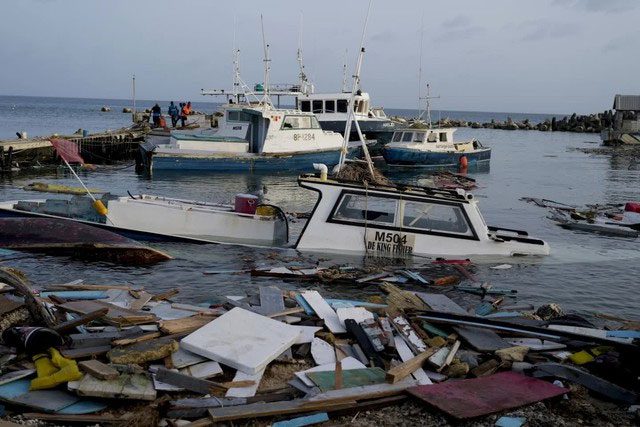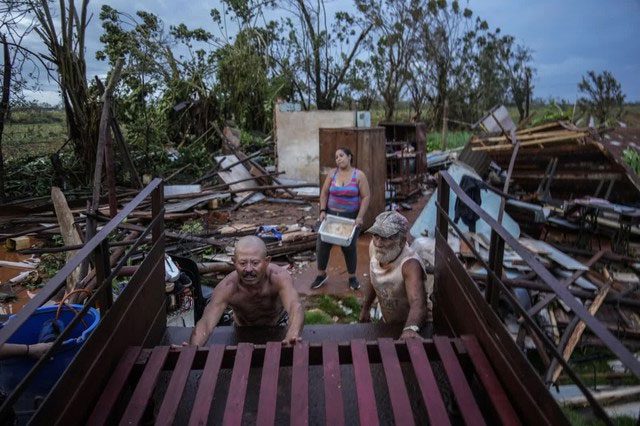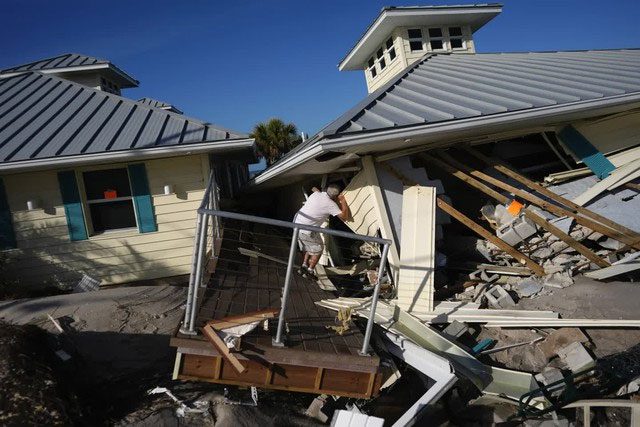The 2024 Atlantic hurricane season concluded on November 2, witnessing a staggering 11 storms and resulting in significant casualties due to natural disasters.
According to the Associated Press, meteorologists have dubbed this season as the “crazy consecutive hurricane season”, partly due to unusually warm ocean temperatures. In 2024, approximately 11 hurricanes made landfall in the United States, Bermuda, Cuba, the Dominican Republic, and Grenada.

Many boats sank due to the impact of Hurricane Beryl. (Photo: AP).
Here are some events that made the 2024 hurricane season stand out:
Beryl became the first Category 4 hurricane to form in June 2024, making landfall on Carriacou Island in Grenada. In Jamaica, the storm destroyed crops and homes, resulting in two fatalities.
“The last time a Category 4 storm, named Dean, hit this island was in 2007. Therefore, strong storms have become quite rare here,” said Brian McNoldy, a hurricane researcher at the University of Miami.
Subsequently, Hurricane Beryl intensified into a Category 5 storm in the Atlantic on July 1. According to the National Hurricane Center, typically, major hurricanes—Category 3 and above—do not appear until September.
By September 2024, Hurricane Helene caused devastating damage in the southeastern United States and was deemed the “deadliest” storm to make landfall since Hurricane Katrina in 2005.
More than 200 lives were lost. North Carolina estimated that the storm caused at least $48.8 billion in direct or indirect damages, including destroyed homes, drinking water systems, farms, and forests. The states of Florida, Georgia, South Carolina, Tennessee, and Virginia also suffered significant damages.
In October of this year, Hurricane Milton rapidly intensified, achieving maximum wind speeds of 180 mph, making it one of the strongest storms recorded by wind speed in the Gulf of Mexico.
The areas where Hurricanes Helene and Milton made landfall experienced rainfall amounts three times higher than normal for September and October, the peak of the Atlantic hurricane season. For Asheville, Tampa, and Orlando, these two months were recorded as the wettest ever.
In November, Hurricane Rafael reached speeds of 120 mph and was nearly the strongest storm recorded in November in the Gulf of Mexico, matching Hurricane Kate from 1985. Rafael made landfall in Cuba, devastating the island as the country was still trying to recover from widespread power outages caused by Hurricane Oscar in October.

Residents recover belongings after Hurricane Rafael’s destruction in Alquizar, Cuba in 2024. (Photo: AP/Ramon Espinosa, File).
Hurricanes and Climate Change
Greenhouse gases such as carbon dioxide and methane, emitted from transportation and industry, are causing the oceans to warm rapidly. While there are several factors contributing to hurricane formation, unusually warm oceans create conditions for storms to form and intensify in unpredictable places and times.
“In other words, there has never been a strong storm like Beryl early in the season anywhere in the Atlantic, nor has there ever been a strong storm like Milton late in the season in the Gulf of Mexico. I never point to climate change as the cause of a specific weather event, but it certainly has an impact and leads to more extreme storms,” Brian McNoldy stated.
Superstorm Beryl was characterized as an “unusual, fierce start” to this year’s Atlantic hurricane season. The storm intensified to Category 4—the earliest recorded in the Atlantic—and was the only Category 4 storm in June. The unusually warm sea surface temperatures allowed Hurricane Beryl to strengthen alarmingly.

Residents reinforcing their homes after Hurricane Milton. (Photo: AP).
According to experts, the power of Hurricane Beryl was astonishing. Beryl intensified from a tropical depression to a major hurricane within just 42 hours. The rapid intensification of the storm was due to warm waters at the ocean’s surface, serving as “fuel” for the developing storms.
Meanwhile, Milton was the third-fastest intensifying hurricane recorded in the Atlantic. In less than a day, Milton transitioned from a tropical storm to a Category 5 hurricane, the highest on the scale, with wind speeds reaching 289 km/h as it swept through the Gulf of Mexico toward central Florida.
The storm’s rapid intensification was remarkable, as its wind speeds increased by 56 km/h in just one day.
In the long term, the impact of the climate crisis, including more intense storms, will only increase as global temperatures continue to rise. This not only means more fatalities and greater devastation but also signals a fundamental change in the Earth—once considered a “safe” place to live.
“We are witnessing a truly unusual period of extreme weather, with severe devastation in the United States. The fingerprints of the climate crisis are evident in recent weather events,” remarked Daniel Swain, a climate scientist at the University of California.

















































